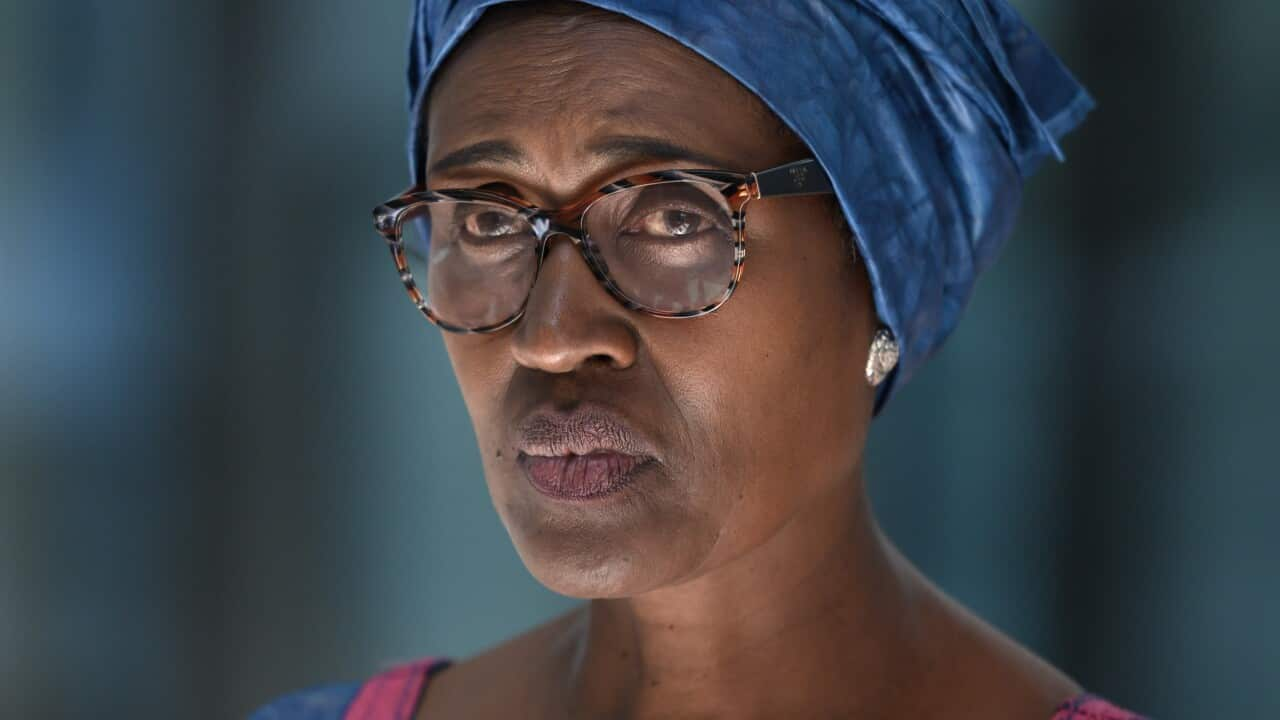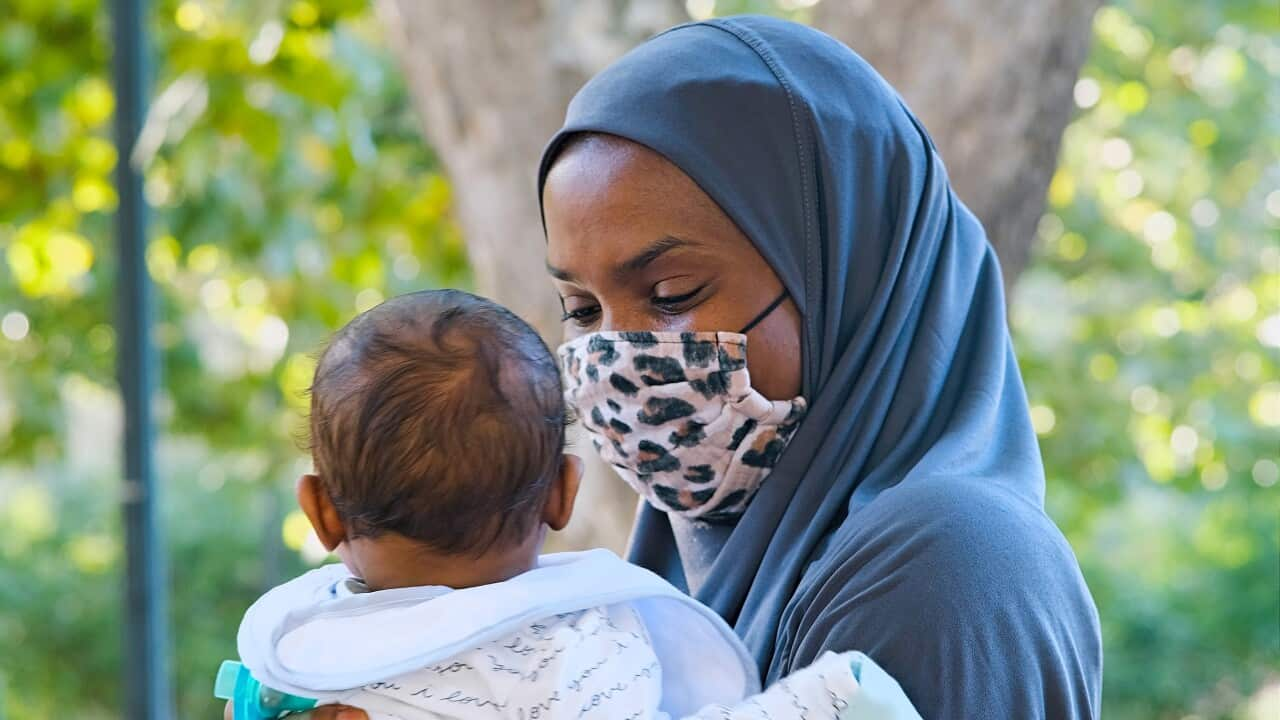Key Points
- Advocates say different strategies are needed to reach emerging at-risk groups.
- HIV rates are growing fastest among heterosexual men and women.
- Those who are sexually active are advised to seek a full sexual health screen at least once a year.
When Jane Costello found out she had HIV, she was surprised.
As a heterosexual woman in a monogamous relationship, she didn't think she was at risk.
"If you had asked me if I was at risk of HIV back then I would have said no. And I think that's what a lot of people still think today," she told SBS News.
It was the early 1990s and the focus at that time for HIV outreach was gay and bisexual men.
Her partner, who later became her husband, received a diagnosis that led her to get tested.
"It took a year-and-a-half for him to be diagnosed. Nobody thought to test him because at that time it was predominantly gay and bisexual men who were diagnosed with HIV," she said.
Costello is the CEO of Positive Life NSW, a group representing those living with HIV in the state.
The organisation works using a peer model where those living with HIV are supported by others with lived experience.
"So we've got a diverse range of people: young heterosexual woman, heterosexual men, people from culturally linguistically diverse backgrounds," she said.
Her experience shows up in the latest annual data on HIV rates in Australia.
HIV transmission rising among wider population
Collected by the Kirby Institute at UNSW, the 2022 numbers show HIV case numbers are growing the fastest among heterosexual women and men (30 per cent of cases), First Nations Australians, and those born overseas.
Gay and bisexual men still account for the majority of the 555 new diagnoses of HIV in 2022, but over a 10-year period the case numbers have declined by 50 per cent.
Dr Skye McGregor from the Kirby Institute said the data revealed the need for prevention strategies targeted at all populations.
"These data suggest that, to eliminate HIV, there needs to be increasing focus on prevention strategies that encompass all populations, including heterosexual men and women, particularly as we all begin to travel more following the relaxing of COVID-19 control measures," she told SBS News.
"This includes safe sex travel campaigns and regular sexual health checks ups which include HIV testing."
Australia moving closer to 2030 target
Darryl O'Donnell, the CEO of advocacy group Health Equity Matters, said in the last decade is praiseworthy.
"By global standards, and also within Australia's history, these are the lowest (annual) numbers we've seen to date," he said.
He said monitoring where transmission is growing will be key to achieving the 2030 goal set by UNAIDS to achieve a 90 per cent reduction in HIV infections and AIDS-related deaths compared to the 2010 baseline.
"So we are very excited and pleased to be tracking towards very low rates of HIV transmission. But this is an infectious disease, so you can't stop working towards elimination until it's over. If we stop our work, the epidemic will take off again."
Increased access to HIV treatment key to reduced transmission
He says increased access to the prescription antiretroviral tablet medication PrEP (pre-exposure prophylaxis) has been key to the success achieved in driving down cases over the last decade.
The treatment is subsidised by the government through the Pharmaceutical Benefits Scheme.
Advocates have also been successful in helping to bring about a states and territories, which allows those without Medicare to access HIV treatment free of charge or at low cost through government-funded hospital pharmacies.
The announcement was made by the federal government on , with Australian states and territories completing the rollout of the scheme this year.
Costello, welcomed the increased access, saying it is critical to achieving the
"It will make a huge difference because we know that if people are on medication they can maintain an undetectable viral load and that's really, really important [when it comes to ending HIV transmission]."
Stigma still a barrier
Costello says her own lived experience with HIV and the stories of others in the Positive Life network underline the importance of building trust and rapport with target populations.
She said any successful public health campaign would need to use imagery and language that reached the target audience.
"I see a lot of young women here and they say that even when they go into sexual health clinics, all of the information on the walls and pamphlets don't speak to them."
Costello remembers being given the prognosis in the 1990s that she would only live for three years. With the development of HIV treatments, she has now been living with the disease for 29 years.
She said stigma still existed and that could impact the frequency with which people sought sexual health screenings, as well as how quickly they got onto the medication.
"Something that we often hear from people who are newly diagnosed: I didn't think I was at risk," Costello said.
"Getting a health screening is about knowing what your health situation is. That empowers you to make really good decisions about your health outcomes and your health going forward."
She said those who are sexually active should be having a full sexual health screen at least once a year. It's recommended every three months for gay and bisexual men.
What would a successful awareness campaign look like?
The organisation is about to launch a new health campaign featuring the slogan 'can't pass it on', which is inspired by successful campaigns in countries like the UK and Canada.
"We work with prevention messaging. We certainly work around testing and treatment as well," Costello said.
"But you've also got to factor in stigma and discrimination. I don't think we've achieved a great deal in how HIV is seen in the wider population; and the stigma that still exists around getting a new HIV diagnosis."
She said the that was broadcast on Australian television used fear as a tactic, which ended up further stigmatising those living with HIV.
Costello said effective messaging today would need to use more empowering language.
"If we're talking about a broader conversation, we need to really talk about normalising, for want of a better expression, HIV. We need to talk about sexual health as simply another way of looking after yourself and your own health," she said.
"People need to be really proactive about sexual health, but also about their health more broadly. If we can somehow incorporate sexual health into an overall health and wellbeing approach, I think that would have better outcomes."
Aboriginal and Torres Strait Islanders another at-risk group
HIV diagnoses among Aboriginal and Torres Strait Islander peoples have increased over the past year, with 25 diagnoses in 2022.
Bundjalung man Robert Monaghan is the manager of Aboriginal and Torres Strait Islander health research at the Kirby Institute.
He said even though the total number was low, it was important to ensure it didn't continue to rise.
"We need to get ahead of this. It could be very catastrophic if this gets out [spreads]," he told SBS News.
"Even though the numbers are low, it could be very dire in the Aboriginal community. Especially given the nature of Aboriginal people, living in very close to proximity to one another in remote communities; the testing facilities aren't the same as in the metropolitan areas."

Robert Monaghan says action needs to be taken to ensure HIV transmission doesn't rise in Aboriginal and Torres Strait Islander communities. Source: Supplied / Kirby Institute
"They tend to be less concerned about their health. We need to get to them early," he said.
Monaghan said any public health messaging would need to reduce stigma, not add to it. He also dismissed the fear tactics used in the 1987 grim reaper ad.
"I think in 2023 we've moved on a lot from the grim reaper approach [and] scaring the living daylights out of people. We're more accepting of people living with HIV. We're more accepting of gender diversity. Services want to engage. But it is how to engage — that is the challenge."
Additional reporting by Lucy Murray




